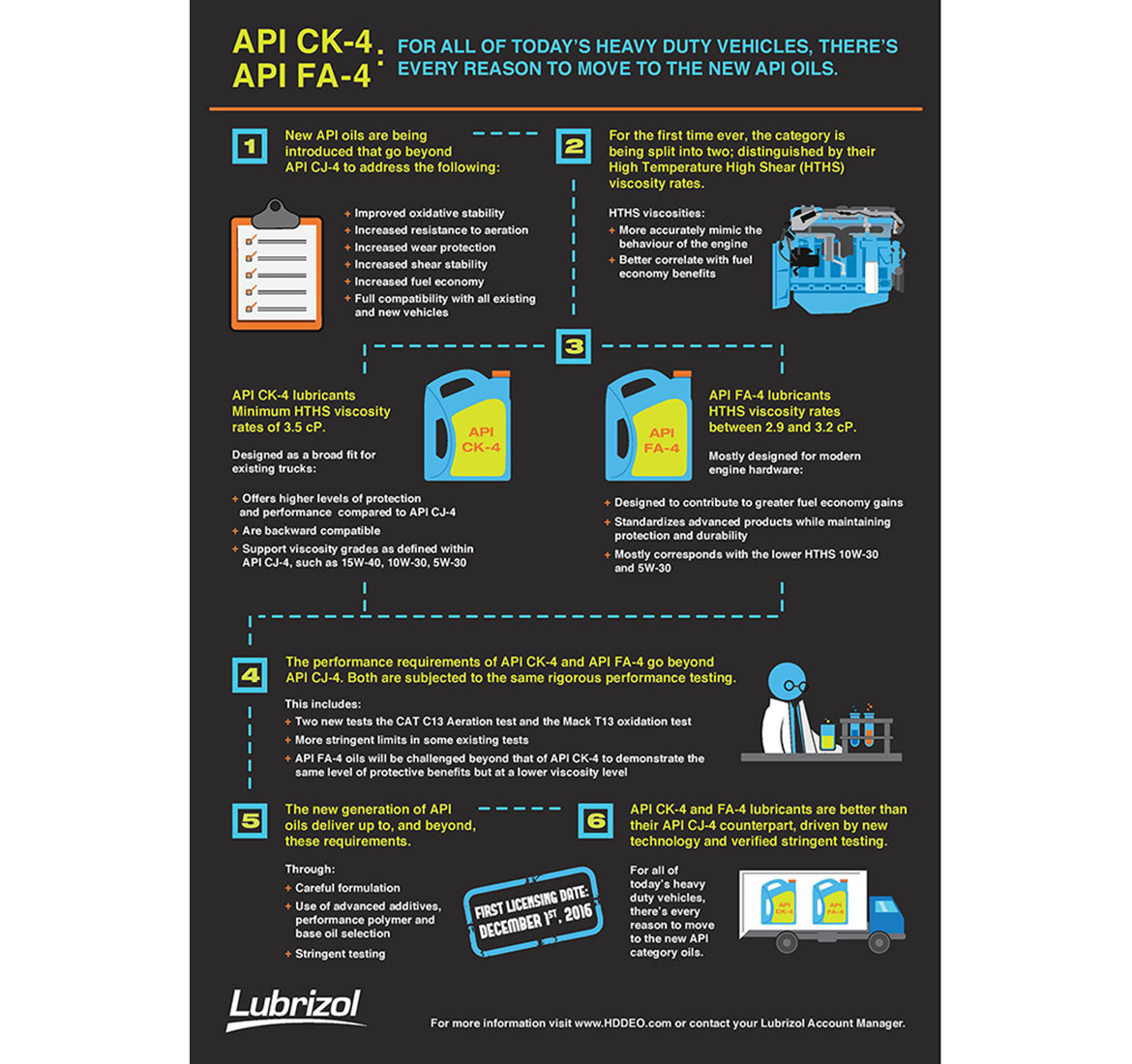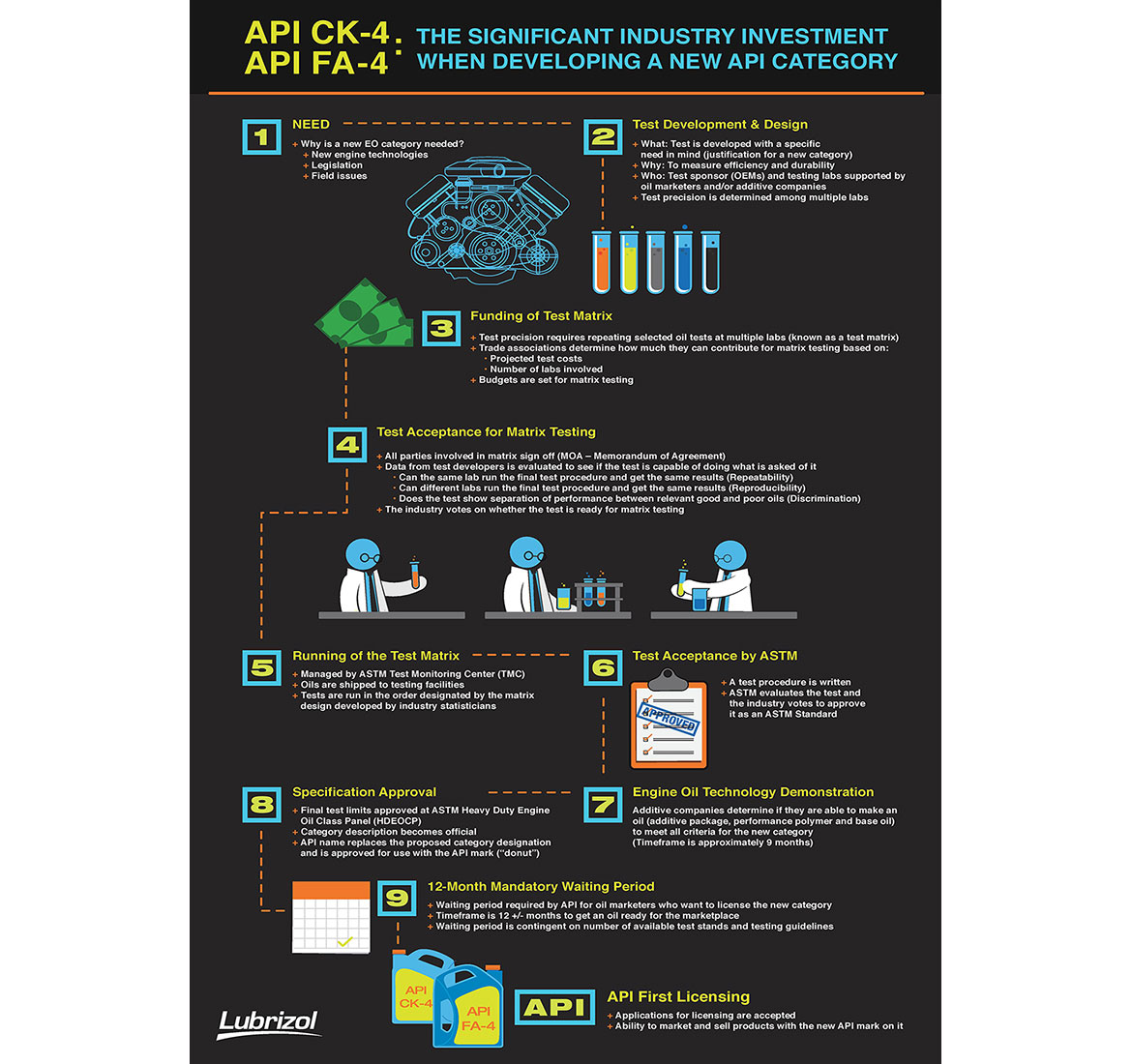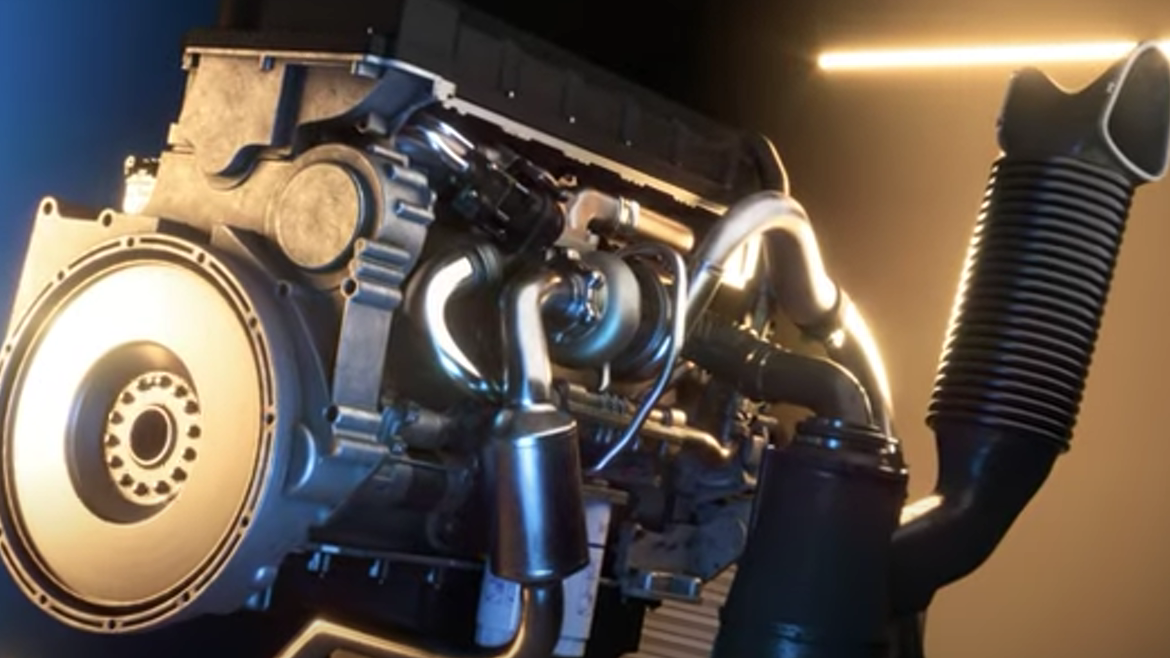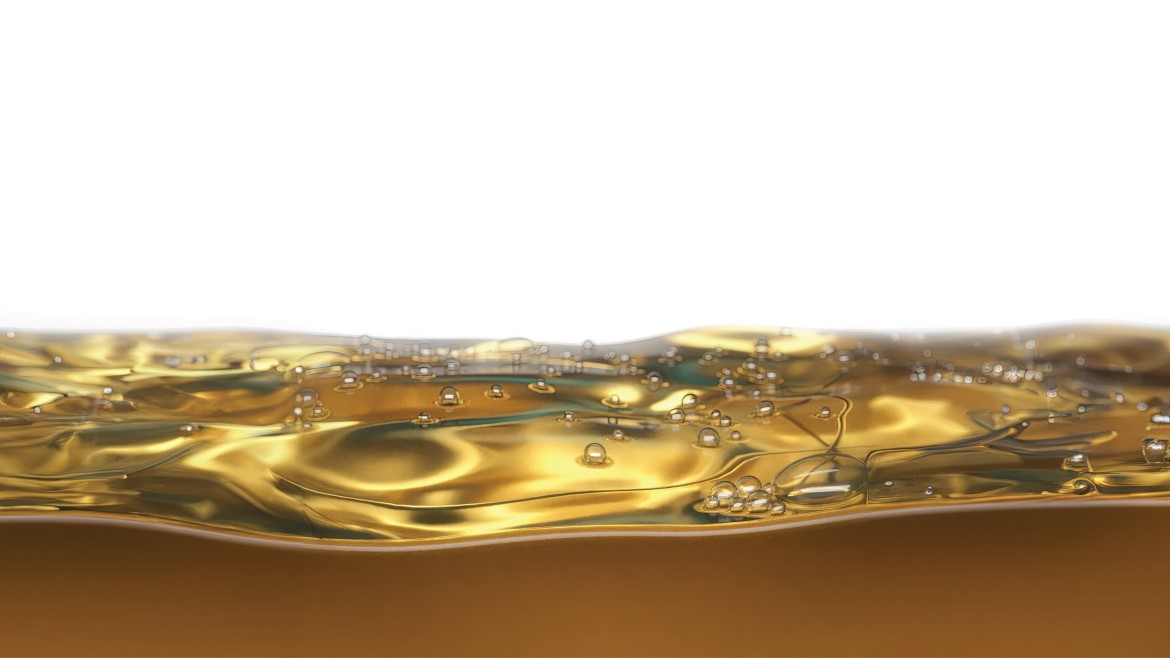Launched in 2006, API CJ-4 the previous category for engine oil performance, was designed to meet the needs of exhaust emission after treatment technologies, while enhancing engine durability. API CK-4 and FA-4 continues to address those issues while introducing improved performance and an increased fuel economy component. The EMA requested that API CK-4 and FA-4 define improvements in oxidation stability, shear stability and resistance to aeration.
Better fuel economy requires the use of lower HTHS (high temperature high shear) viscosity, fuel efficient engine oils. Today, the U.S. market is dominated by SAE 15W-40 lubricants for diesel engines, but it is likely that, with the advent of API CK-4 and FA-4, we will see an increased use of SAE 10W-30 oils. In response to the range of viscosity grades in the market, for the first time in history, the heavy-duty engine category is split into two: API FA-4 oils will be suitable for both existing and new engines as defined by the respective OEM and API CK-4 offers backward compatibility in higher HTHS viscosity grades.
See how the category is split into API CK-4 and API FA-4

See how new API categories are developed










